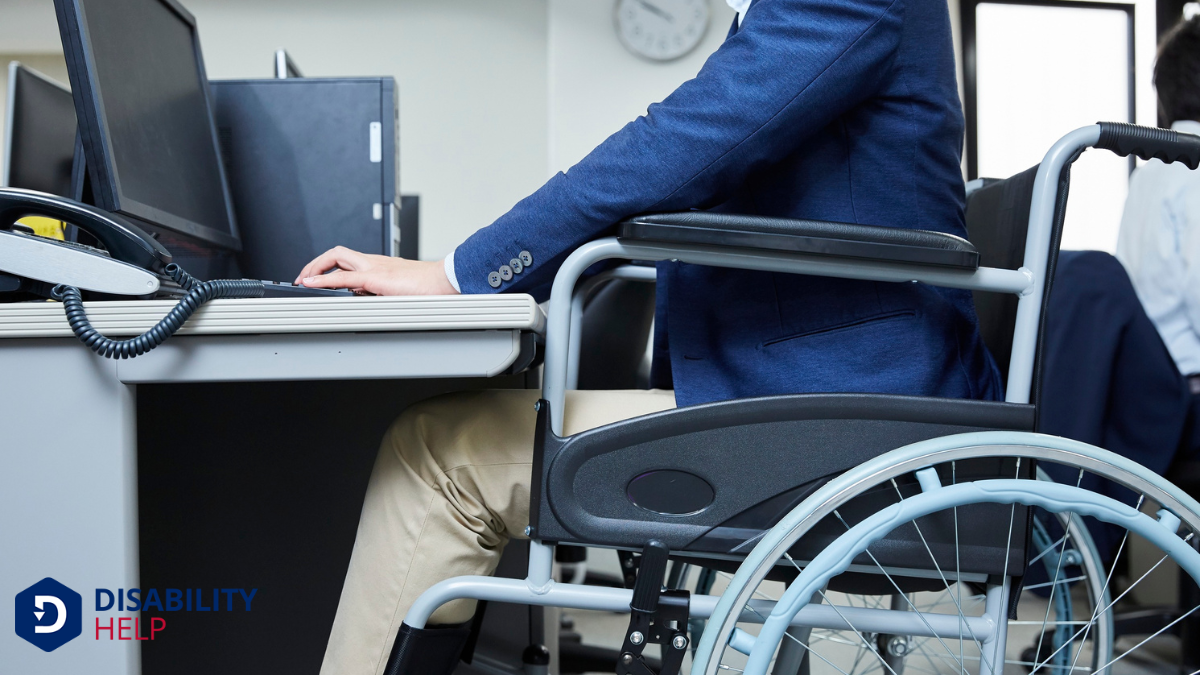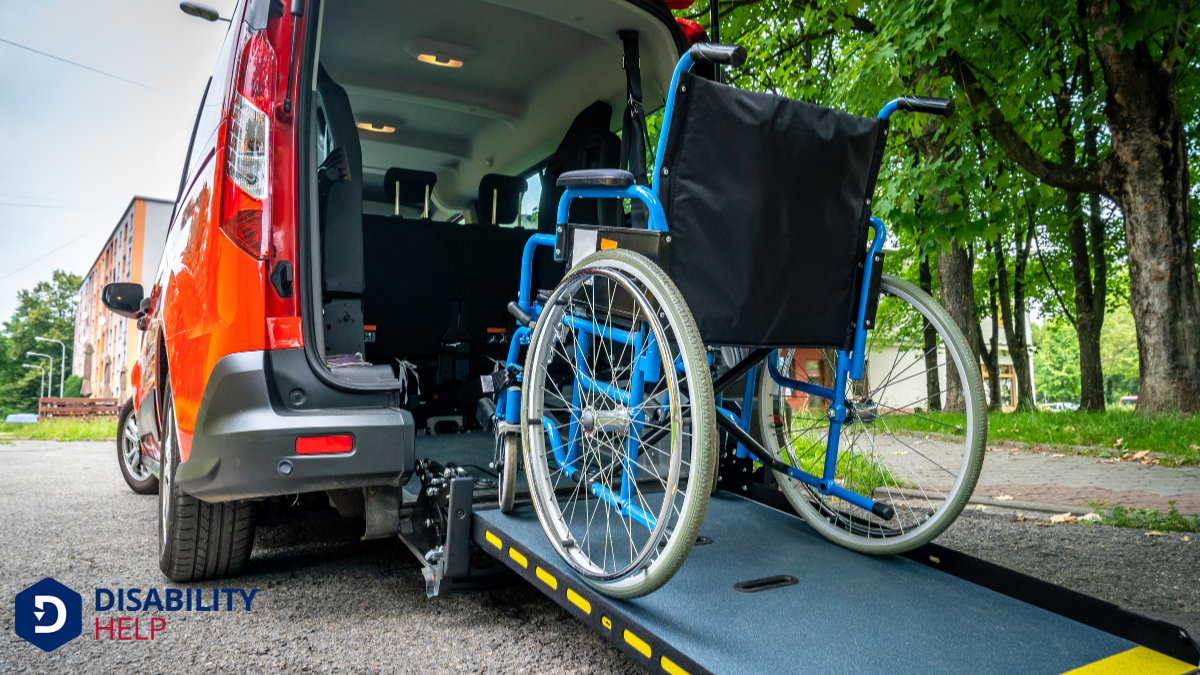Let's unpack the three levels of assistive technology: low-tech, mid-tech, and high-tech solutions. These tools range from simple, everyday aids to sophisticated innovations that transform how we live and interact. But how do we determine which level best suits our needs or those of someone we support? Let's explore the unique features and benefits of each level, and see how they can enhance independence and quality of life.
Key Takeaways
- The three levels of assistive technology are low-tech, mid-tech, and high-tech solutions.
- Low-tech assistive technology includes simple tools like pencil grips that don't rely on electricity.
- Mid-tech solutions offer more functionality with devices like electronic organizers and adapted keyboards.
- High-tech innovations include advanced technologies like smart home systems and powered exoskeletons.
- Each level caters to different needs, from basic assistance to transformative accessibilityThe design of products, devices, services, or environments to be usable by people with disabilities.... enhancements.
Understanding Low-Tech Assistive Technology
When we talk about low-tech assistive technology, we’re diving into tools and devices that don’t rely on electricity or complex electronics. These solutions are straightforward, yet they make a significant impact on daily lives.
Think of items like pencil grips, magnifying glasses, or picture boards. They’re easy to use and often very affordable, making them accessible to many.
We find that these tools are perfect for individuals who need a little extra help with tasks such as reading, writing, or communicating.
Let’s appreciate how these simple tools can enhance independence and improve quality of life. By focusing on these non-electronic aids, we can see how assistive technology doesn’t always have to be high-tech to be effective and empowering.
Exploring Mid-Tech Solutions

As we explore mid-tech solutions, we find a range of versatile devices that offer greater functionality than low-tech options.
These tools often enhance accessibility by providing tailored support for various needs, whether it's through specialized software or adaptable hardware.
Let's consider how these mid-tech solutions can empower users in their daily activities.
Versatile Mid-Tech Devices
Although high-tech solutions often steal the spotlight, versatile mid-tech devices play an essential role in assistive technology by offering a balance of functionality and ease of use. These devices, like electronic organizers or adapted keyboards, provide practical solutions without overwhelming complexity. They’re perfect for users who want a reliable tool that enhances daily life without the steep learning curve of more advanced gadgets.
We find mid-tech devices beneficial because they’re straightforward and adaptable. For instance, voice output communication aids help those with speech difficulties express themselves effectively.
Similarly, talking calculators assist individuals in managing calculations without visual strain. These tools empower us by bridging the gap between simplicity and capability, ensuring that everyone can access technology that complements their abilities and needs.
Mid-Tech Accessibility Tools
Mid-tech accessibility tools offer a unique blend of simplicity and functionality that make them invaluable in our daily lives. They bridge the gap between low-tech and high-tech solutions, providing practical support without overwhelming complexity.
These tools can include devices like electronic magnifiers, text-to-speech software, and adapted keyboards. We can find them particularly useful for those who need assistance with vision, hearing, or mobility.
Incorporating mid-tech tools into our environments enhances accessibility and independence. For example, electronic organizers help manage daily tasks, while digital recorders aid memory.
They empower us by enabling greater participation in activities that might otherwise be challenging. By leveraging these tools, we create more inclusive spaces that cater to diverse needs, ultimately promoting a more accessible and equitable world for everyone.
High-Tech Innovations in Assistive Devices
Let's explore how high-tech innovations are transforming assistive devices, making our lives more accessible and connected.
With smart home integration, we can control our environment with ease, while advanced mobility solutions offer increased independence.
Personalized communication aids also guarantee that everyone's voice is heard, tailored to individual needs and preferences.
Smart Home Integration
With the rapid advancement of technology, smart home integration has become a revolutionary force in assistive devices, transforming the way we interact with our living spaces.
We're now able to control lights, thermostats, and security systems with just our voices or mobile apps. For those with mobility challenges, these innovations offer a new level of independence and ease. Imagine the freedom of adjusting room settings without needing to move physically across the space.
Smart devices can also provide reminders for medication or daily tasks, making life safer and more organized.
As we embrace these technologies, we’re not just enhancing convenience; we’re fostering an environment where everyone can thrive.
Let’s explore how these tools empower us to live more comfortably and confidently.
Advanced Mobility Solutions
As we explore advanced mobility solutions, it's clear that high-tech innovations in assistive devices are transforming lives. These cutting-edge technologies provide increased independence for individuals with mobility challenges. For example, powered exoskeletons enable users to stand and walk, offering newfound freedom.
Similarly, smart wheelchairs equipped with sensors and AI can navigate complex environments with ease. These devices aren't just about movement; they're about enhancing quality of life.
Adaptive controls and customizable settings guarantee that each device meets personal needs. The integration of IoT allows for real-time monitoring and remote adjustments, providing peace of mind for both users and caregivers.
As we continue to support these advancements, we’re helping create a more accessible world for everyone.
Personalized Communication Aids
Empowering individuals through innovative technology doesn’t stop at mobility.
Personalized communication aids represent a significant leap in high-tech assistive devices, opening doors for those who face challenges in verbal expression. These tools, like speech-generating devices and advanced apps, cater to unique communication needs, enhancing interaction and independence.
We must consider how these aids are tailored to fit individual preferences and capabilities, ensuring they’re effective and user-friendly.
Key Benefits of Low-Tech Tools
Even though technology often seems synonymous with complexity, low-tech tools offer straightforward solutions that can profoundly enhance daily living.
We find that these simple yet effective tools provide immediate assistance, flexibility, and accessibility. They don't require extensive training or maintenance, making them ideal for quick adaptation and use.
One key benefit is their affordability, allowing us to integrate them into our lives without significant financial strain. Additionally, low-tech tools promote independence by enabling us to perform tasks on our own, boosting confidence and self-reliance.
Consider these advantages:
- Affordability: Low-tech tools are budget-friendly, making them accessible to a wider audience.
- Ease of use: They require minimal instruction, allowing for immediate implementation.
- Versatility: These tools can be adapted to meet a variety of needs and situations.
Advantages of Mid-Tech Options

While low-tech tools provide immediate and simple solutions, mid-tech options take us a step further by offering enhanced functionality without overwhelming complexity.
These devices, like electronic organizers and simple speech-generating devices, bridge the gap between basic tools and high-tech solutions. They give us the ability to customize features to individual needs, providing more tailored assistance.
For example, mid-tech options often include devices with programmable buttons, allowing us to store frequently used phrases or commands. This increases efficiency and independence for users in their daily tasks.
Mid-tech solutions are generally more affordable than high-tech alternatives, making them accessible to a wider audience. They don't require extensive training, so users and caregivers can quickly adaptA grassroots disability rights organization in the U.S. that focuses on promoting community-based se... and integrate them into daily routines, improving quality of life.
High-Tech Solutions and Their Impact
High-tech solutions in assistive technology present an array of advanced tools that greatly transform how individuals interact with their environment.
As we embrace these innovations, we're witnessing a significant shift in accessibility and independence. These technologies, ranging from sophisticated software to cutting-edge hardware, empower users in unprecedented ways.
For instance, speech-to-text applications allow individuals with speech difficulties to communicate effortlessly.
Consider these key impacts:
- Enhanced Communication: Devices and apps that translate speech into text or vice versa facilitate clearer interactions.
- Independence: Smart home systems enable users to control their environment with ease, boosting autonomy.
- Personalization: Tailored solutions adapt to an individual’s unique needs, ensuring a better fit and increased effectiveness.
Let's seize these opportunities to make a real difference in people's lives.
Choosing the Right Level of Assistive Technology
How do we determine the most suitable level of assistive technology for each individual? First, we need to assess the person's specific needs and abilities. This involves understanding their daily challenges and identifying which tasks they find difficult. By doing this, we can match their needs to the appropriate level of technology—low-tech, mid-tech, or high-tech.
It's essential to take into account the individual's comfort and familiarity with technology.
Next, let's evaluate the environment where the technology will be used. Will it work in their home, school, or workplace?
Finally, we should involve the individual in the decision-making process to guarantee they're comfortable and confident with the chosen solution. This personalized approach helps us tailor assistive technology to enhance independence and quality of life.
Conclusion
In exploring the three levels of assistive technology, we've highlighted how each can enhance lives in unique ways. Low-tech tools provide simple yet effective support, while mid-tech solutions bridge the gap with more functionality. High-tech innovations offer transformative possibilities for independence and communication. By understanding these options, we can choose the right level of technology that meets individual needs, empowering us to live more fully and confidently. Let's embrace these tools to improve our quality of life.






